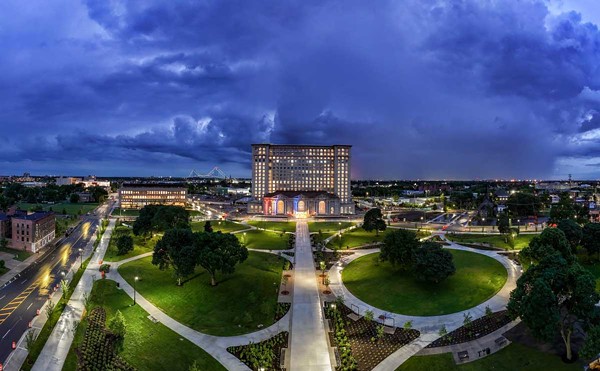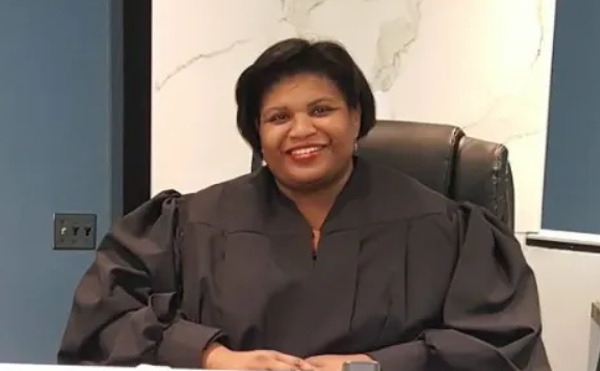The stock market continues to nosedive. Major financial institutions have crumpled and retirement funds are evaporating. There's no end in sight to the foreclosure pandemic that hit southeast Michigan before most other areas. The Big Three automakers are frantically trying to fend off collapse. With millions of manufacturing jobs lost already, the immediate future holds the dismal promise of unemployment lines swelling even more.
But in the gloom, some see a shining green beacon, showing the way ahead.
"This is the future," says Oakland County Commissioner Jim Nash, a longtime proponent of green development strategies.
The way he sees it, amid all the negative trends that have combined to create economic disaster, another convergence also under way offers hope. Describing what he calls "a sort of perfect storm, but in a good way," Nash and others point to four factors:
No. 1: widespread realization that continued dependence on Middle Eastern oil poses a clear economic and national security threat to the United States. No. 2: the financial imperative to reduce energy costs at all levels. No. 3: acceptance that climate change must be addressed by reducing use of carbon-based fuels. All three points demand a change in the way this nation deals with its energy issues.
Add to this mix No. 4: a new president who has made investment in green technology and energy efficiency a top priority — with a promised investment of $150 billion over the next 10 years — and there's no doubt change is coming, Nash says.
What remains to be seen is whether this beleaguered region will catch the rising green tide quickly enough to become a leader.
"We were the Arsenal of Democracy," observes Nash. "There's no reason we can't be the arsenal in the fight against global warming. But if we don't do it, we are going to be buying this new technology from Germany and Japan."
And this is no longer an issue of environmentalists always fighting an uphill battle against those who see them as a threat to economic development.
As researchers from Duke University's Center on Globalization, Governance & Competitiveness noted in a report released last week: "While some seek to pit the environment against economic growth, we see economic opportunity in the solutions to the climate crisis. Many business analysts agree. They believe the economic leaders of tomorrow will be companies that manage their resources efficiently and take the lead in developing and commercializing innovative clean technologies. These will also be the companies most able to create well-paying jobs and ensure that current jobs are secure. The demand for climate solutions will create — very directly — manifold job opportunities in many sectors, from core industries such as renewable and energy efficiency businesses to traditional areas such as construction trades, pipefitting and electrical jobs. Equally important, though, is the vast supporting cast of industries that make these low carbon end products possible."
The Duke report described Michigan as being well-poised to mass manufacture solar technology.
"U.S. auto production has the capacity to produce over 19 million vehicles [a year], but only about 15 million of the current capacity is being used," the report noted.
Another report, this one by the Renewable Energy Policy Project, a Washington, D.C.-based nonprofit, states that "by virtue of its industrial base, Michigan stands to benefit from the increased demand for renewable technology."
The way Oakland County's Nash sees it, there is a snowball effect to promoting a green economy, with local governments being in a particularly good position to get efforts rolling. A commitment to pursue energy-efficient building construction and renovation provides jobs and encourages manufacturers to locate in areas where they know their products will be in high demand. The hope is that a partnership of school districts and local colleges, units of local government and the private sector can be a catalyst for change.
Nash and fellow members of the newly formed Regional Sustainability Partnership — which includes Wayne, Oakland and Macomb counties and the city of Detroit — need look no further than Grand Rapids for an example of a comprehensive, sustainable philosophy of economic development at work.
A city of fewer than 200,000 residents, Grand Rapids has leveraged its reputation as one of America's greenest cities to help spur growth. With a model that's been recognized by the United Nations, the city obtains 20 percent of its power from renewable resources and has a goal of 100 percent by 2020. As reported in the magazine Fast Company, the municipal government's energy use has been cut by more than 10 percent, the public transportation fleet features hybrid buses, and the city leads the nation in highly energy-efficient buildings per capita.
And it's not just government. As the business magazine pointed out, local corporations such as office-furniture manufacturers Steelcase and Herman Miller "here, in the heart of the Rust Belt, are leading the greenification charge."
The companies are turning "eco-friendly in the belief that reducing the environmental cost of commerce will raise their profits" and "boost the regional economy."
It is a philosophy that's working.
Grand Rapids' Renaissance Zone (where tax breaks are offered to spur business development) "has become the most successful in Michigan" and "continues to lead the state with the number of new Renaissance Zone projects," according to the city's website. Over the past 10 years, the zone has attracted investments totaling more than $250 million.
As the Free Press recently reported: "When Mayor George Heartwell looks out his office window, he sees an unusual sight in Michigan: a skyline full of construction cranes.
"The city is experiencing a building boom, and it's green. Four of the five giant new projects rising downtown are green-built."
Those are the kinds of headlines Nash wants to see being written about southeast Michigan, which is why he was a strong proponent of establishing the Regional Sustainability Partnership, which is modeled on the Grand Rapids effort.
A key part of the plan is to help local governments pursue higher energy-efficiency standards and promote the use of green technology, says Nash.
Although the up-front costs might be higher, going green provides tremendous savings in the long run, says Nash. He points to Ann Arbor, which replaced its conventional street lights with energy efficient LED lights at a cost of $3 million but with the potential of saving $1 million a year on electricity.
By helping local units of government to conduct energy audits and obtain grants to help pay for projects, the partnership seeks to both help save taxpayer dollars and promote job growth.
He talks about solar panels and wind turbines, electric and hybrid vehicles, advanced water treatment systems and mass transit, pollution control technology and energy efficient products ranging from windows to refrigerators.
Whether it is at a company making LED lights or installing upgraded installations, there are jobs to be had by going green. And by cooperating on a regional basis, the chance of obtaining those jobs improves.
Kathryn Underwood, a staff member at the Detroit Planning Commission who focuses on sustainability issues, helped spur creation of Regional Sustainability Partnership, which will have its first meeting in January.
Energy efficiency, especially, is a "no-brainer," she says. "It is something everyone — the city, the counties, municipalities, businesses, households — can grasp."
And if you get everyone on board and moving in the same direction, you increase your potential for creating jobs.
"If government takes leadership, we can start encouraging folks [from the private sector] to come in and start doing economic development," she says.
There's also the chance of another spin-off benefit: "It's not an issue that's rife with a lot of controversy. If we, as a region, can come together and cooperate on this, it paves the way for the region to come together on more difficult issues, like transit."
"I see the bleakness as a canvas," she says. It's a canvas open to the prospect of being painted over in bright green.
She adds, "I see a lot of reason to hope."
Curt Guyette is Metro Times news editor. Contact him at 313-202-8004 or [email protected]




